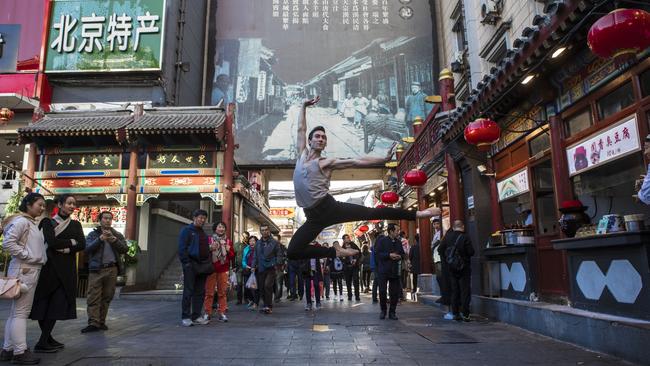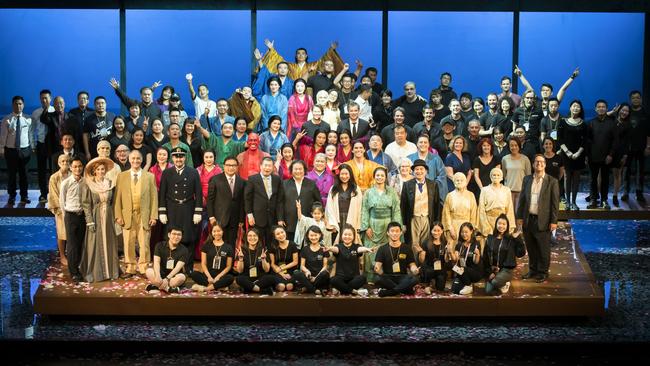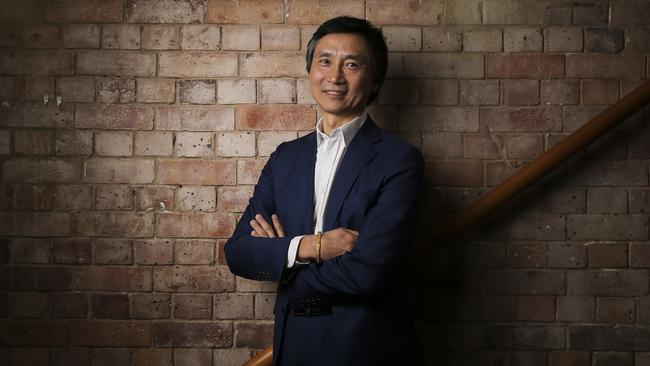Opera Australia and the Australian Ballet wow Chinese audiences
Opera Australia and the Australian Ballet are at the forefront of efforts to strengthen cultural ties with China.

It’s a tale of two Australian arts companies in China, with very different stories.
Opera Australia and the Australian Ballet are both finishing up successful tours to China this month: OA on its first trip there (with Moffatt Oxenbould’s Madama Butterfly), and the AB on its ninth visit (with David McAllister’s The Sleeping Beauty).
AB, backed by corporate sponsorship and government assistance, has been booked at three of China’s top arts venues: the National Centre for the Performing Arts in Beijing, the Jiangsu Centre for the Performing Arts in Nanjing and the Shanghai Theatre Grande, where its tour concludes this weekend.
OA’s tour, meanwhile, has been funded by a Chinese promoter who saw Madama Butterfly at the Capitol Theatre in Sydney and fell in love with it. The company has visited the smaller cities of Tianjin, Qingdao and Shenzhen, and its final performance tonight is in Zhuhai, just across the border from Macau.
AB took 130 people and 12 containers. OA travelled with about 30 people, its resources supplemented by the China National Opera House Orchestra and Chorus under the baton of Shanghai-born conductor Muhai Tang, known in Australia from his time as chief conductor of the Queensland Symphony Orchestra.
These are just two of the Australian ensembles keen on audiences in China. The Queensland Ballet tours next month for the first time under artistic director Li Cunxin, who told his story in Mao’s Last Dancer; on their first international tour, the Sydney Symphony Orchestra Fellows performed last week as part of the 2018 Nanjing Arts Festival; and, also last week, Melbourne’s Red Stitch Actors Theatre took part in the Wuzhen Theatre Festival in Zhejiang province.
While there have been tensions in the Australia-China relationship, the number of arts companies visiting China tells a very different story, with the growing Chinese middle-class eager for more Australian culture, and a growing number of Australian companies responding to the demand.

Artistic director Lyndon Terracini says the OA’s tour has been so successful that he would like to see annual visits. His company was there as a result of the enthusiasm of Chinese promoter Tian Jianchuan, who funded the trip through his company XDR Cultural Promotions.
“He came to Sydney and saw Madama Butterfly when we did it at the Capitol Theatre last year,” Terracini says. “It’s an enormous risk on his part touring a production by Opera Australia, which is not cheap. He has taken a huge financial risk. I have enormous admiration for him. There is no financial risk for OA whatsoever. I was not sure if Madama Butterfly would be the right sort of opera to do in China culturally, but he assured me that it would be fine.”
The 30 people OA sent to China ended up becoming part of a touring group of 100 travelling around the country. The opera was sung in Italian with Chinese and English surtitles.
“To say that this tour was going to be anything but challenging is an understatement,” says China tour manager Linda Barrie, who is overseeing the troupe’s final performance in China tonight.
“We had just three months from the contract being signed to landing in Beijing for the studio rehearsals.”
Barrie says OA was unable to take more staff because the last two weeks of the tour clashed with the first two weeks of the company’s Melbourne spring season.
While the houses in China were either sold out or almost sold out, Terracini says one of the greatest challenges was that language issues with back-of-house staff meant that putting the ambitious set together — which included a water feature — took a bit more time than expected.
“We realised we needed to spend more time bumping the show in because of the language issues,” he says. “You can’t just give orders to stagehands the way you can do in Sydney.”
Terracini says OA was fortunate to have Tang as a conductor. “It’s great having the connections and relationships with key players such as Tang,” he says.
“He has conducted all the major orchestras in the world. In terms of a cultural exchange between Australia and China, it couldn’t have been better.”
The role of Cio-Cio-San was played by South Korean soprano Mariana Hong, who lives in Australia, while Paul O’Neill was Pinkerton.
Terracini says the Chinese promoter has ambitious plans for OA to perform Australia’s 10 top operas in China, including Rigoletto.
“We’ve learned that extremely high quality performances and productions are enthusiastically received by the Chinese public,” Terracini says.
“We would like to perform in China every year, and I hope we can do that.”
The Australian Ballet first performed in China in 1980 and was there as recently as three years ago.
Libby Christie, the company’s executive director, says that first trip took place as the Australian and Chinese governments were building a new relationship after the Cultural Revolution.
“The Australian Ballet was one of the first Western companies to perform in China following the Cultural Revolution,” she says.
“The audience would have been mainly government officials, rather than the general public. At the very beginning the tour was a very definitely about cultural diplomacy.
“There is still an important element of cultural diplomacy in our visits to China — the Chinese embassy in Canberra farewelled us with a reception for us.”
But the nature of the tour was changing, she says, with the rising importance of China as a cultural centre and the increasing sophistication of its audiences. She said its major venues are “very commercial in the way they operate.”
Christie says Chinese audiences are “pretty similar to the audiences we perform to everywhere”.

“They are well informed about ballet. They regularly see top international ballet companies in their major venues. They are very discerning and they knew what they like.”
Christie says The Sleeping Beauty was chosen for this tour because it was unique to the company. “We want overseas audiences to be seeing Australian Ballet dancers dancing a production they can’t see anyone else in the world perform.”
Taking the production to China proved to be quite a feat in terms of logistics. “It was a huge endeavour to send a production like that internationally,” she says. “But it’s worth it because we want an international audience to see the best we can offer.”
It took almost a week to build theset, which is why the show was scheduled only for Beijing and Shanghai. The company performed Giselle in Nanjing last weekend.
Christie says one of the reasons for touring China was that its main cities were carving out reputations as world cultural centres.
“Beijing and Shanghai are important cultural cities in the world of ballet and art,” she says.
“If we perform in these cities, we know that the audiences there are expecting to see the top companies from around the world and that they will be benchmarking us against them. If we sell out a performance there, we are very happy about what that says about our standards.”
Christie says Australian arts companies also displayed the diversity of Australia’s multicultural community to the world.
“It is an opportunity for people in another country to see how diverse Australia is,” she says.
“If you look at the Australian Ballet, we have three dancers who were born in China. We have dancers from all over the world, because of the multicultural nature of the Australian population.”
Christie says the tour has also created opportunities for more exchanges with companies in China, including the National Ballet of China. And while the company has been invited to return soon, it could be some years before it is organised.
Australia’s ambassador to China, Jan Adams, is struck by the wide range of Australian arts companies engaging with China. Adams attended the opening night of The Sleeping Beauty in Beijing, and says Australian companies have been seen from Hangzhou to Shanghai, Wuzhen to Zhuhai in the past week alone.
“From classics reimagined to new productions featuring homegrown Australian stories, the diversity of Australian productions touring China now is remarkable,” she says. “Arts audiences in China are generally younger, and there is great appetite for new experiences.”




To join the conversation, please log in. Don't have an account? Register
Join the conversation, you are commenting as Logout